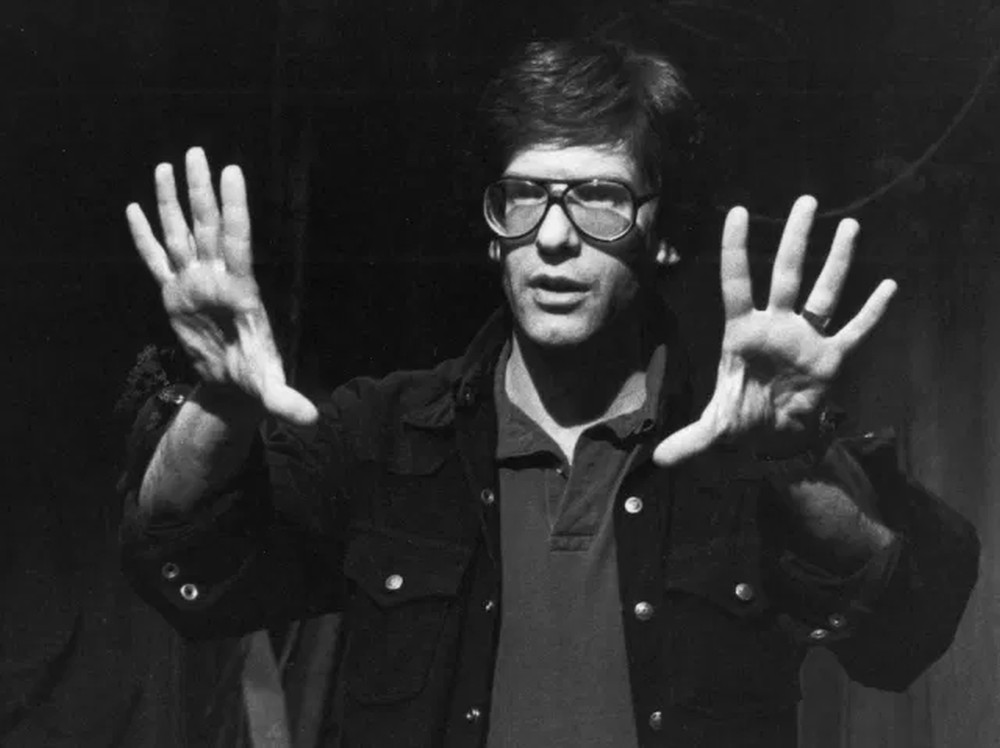Mutant Cinema: The films of David Cronenberg
“For the mind to change and to understand more, the body will have to change.”
David Cronenberg
While most films are about the changes that take place to a character or characters over a period of time, David Cronenberg’s movies rarely restrict the alterations to the psychological or emotional. In almost every case, his heroes/heroines change physically, becoming mutated and abnormal, usually with tragic consequences – the mortality rate of his leading stars is closer to 100% than any other director.
The key phrase for Cronenberg’s films is ‘body horror’; the threat comes from within, rather than being an external threat as in monster movies. “My films are very body conscious”, he said once and it can’t be denied that biological change is the most pervasive themes in his work – others include the breakdown of civilization, sexual deviation and disease).
The causes of the mutations may be divided into two groups – we’ll take one from each for further investigation later :
Self-induced psychological
- THE BROOD
- DEAD RINGERS
- THE DEAD ZONE
- SCANNERS/STEREO
Artificially induced physical
- THE FLY
- VIDEODROME
- THEY CAME FROM WITHIN
- RABID
These aren’t clear-cut – a case could be made for putting ‘Videodrome’ in the first section, as the film provides no evidence that Max Renn’s experiences are really happening. However, the tumour initially responsible for the hallucinations IS artificially induced, though it could be considered minor compared to the massive ‘mutations’ which follow. Anyway, it offends my sense of order to have unequal halves!
Similarly, the physical/psychological barriers become blurred; mental problems slop over into the physical world in ‘The Brood’ and ‘Scanners’, and the reverse is true in ‘Videodrome’. Although the modifications generally prove ultimately disastrous, it’s often the case that the sufferer/mutant can live with them initially, until an outside agency decides to interfere.
Enough general chat, let’s get down to specifics, starting with a film that was critically slammed at release, yet crops up again and again these days on ’10 Best’ lists.
Videodrome (1982) – James Woods, Debbie Harry
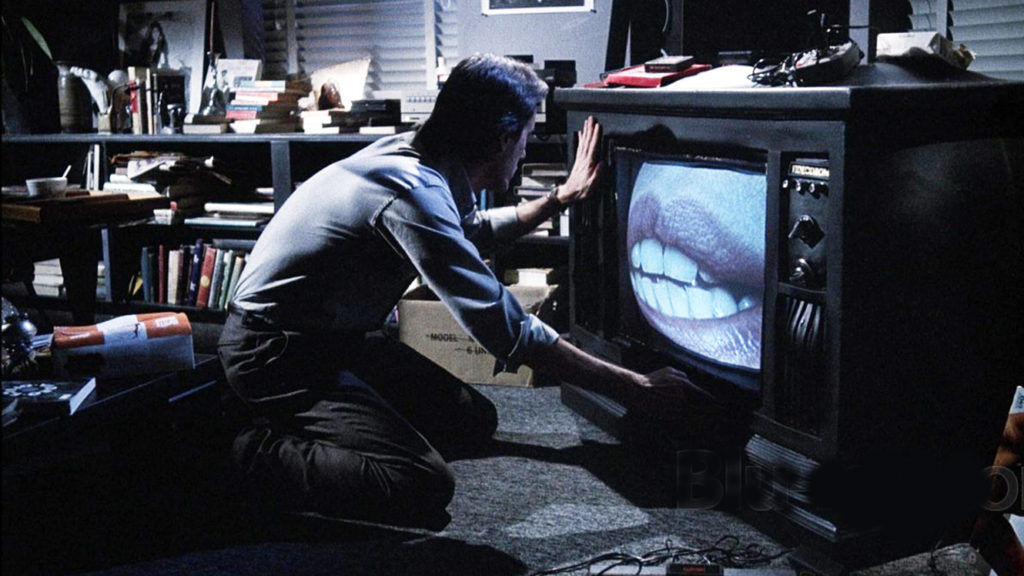
Max Renn (James Woods) run a seedy TV station, Channel 83, and is on the lookout for some new shows. When his pet technofreak gives him some pirate tapes of a satellite transmission, he senses something new, even though the show, called Videodrome, is nothing more than torture and sadism. On a talk show he meets media guru, Brian O’Blivion and radio DJ Nicki Brand (Harry). He shows her the tape and she shows him some interesting tricks with a cigarette end, a needle and an ice-cube (not in the original video version – in an act of rank cowardice, CIC Video cut the film themselves ‘just in case’ it might be seized, and removed several ‘offensive’ sections. The sell-through version recently released is a hell of a lot better.
Max begins to suffer increasingly bizarre hallucinations – his TV becomes a living creature, corpses appear in his bed and his stomach develops a video-cassette shaped slot, in which he ‘loses’ a gun. He turns for help to Professor O’Blivion, only to find O’Blivion is dead – he exists only as a vast collection of video tapes, looked after by his daughter, Bianca (Sonja Smits). Meanwhile, Nikki has vanished, in search of the makers of Videodrome – that she’s found them becomes clear when Max gets a tape showing HER torture.
Matters come to a head and Max discovers he’s been the guinea pig in a bizarre mind control experiment. The tapes were NOT satellite broadcasts but were planted on him by his engineer – they contain a subliminal signal which causes the visions. He is ‘programmed’ to kill his colleagues at Channel 83, but after he has done this, Bianca helps him control the hallucinations and he destroys the people responsible before committing suicide.
Apologies for this lengthy synopsis, but no shorter one would make sense; you can’t envisage anyone presenting a 25-word pitch on it to a coked-up studio executive. The film is astonishingly non-Hollywood – how many other films end with the hero blowing his brains out? But what is it all ABOUT? Let’s take a few choice quotes, and see how much of my English O-grade teaching I can remember…
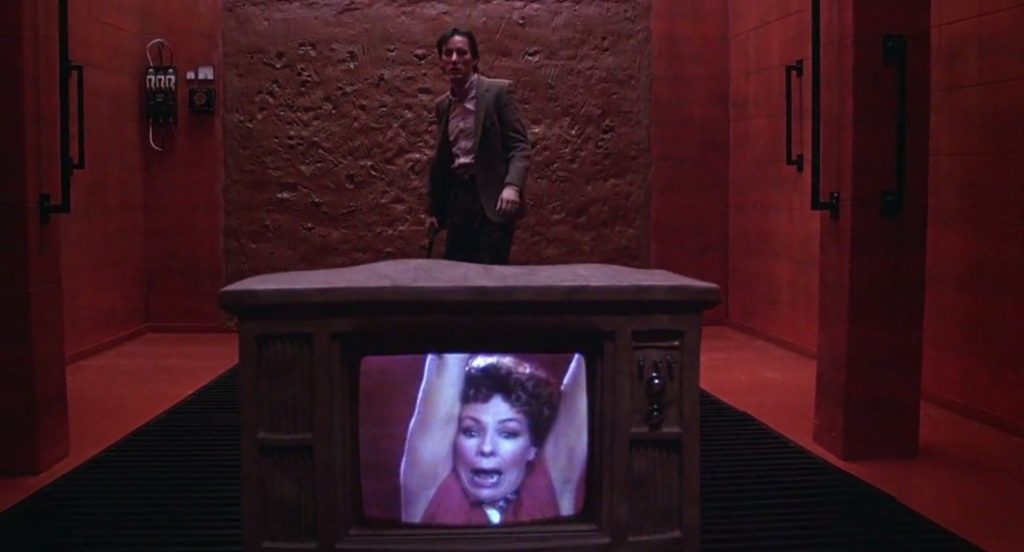
“[Videodrome] has a philosophy, and THAT’S what makes it dangerous”
The most obvious theme is the impact of television and other such media on the audience – I think Max Renn is meant to represent David Cronenberg, a comparison made explicit during one scene in an opticians when James Woods tries on a pair of Cronenberg-style glasses. The message is, it’s not what you show that’s important, it’s the underlying meaning which counts, as against Channel 83’s policy of showing anything likely to get an audience.
“We’re entering savage new times, and we’re going to have to be pure and direct and strong if we’re going to survive them”
Cronenberg is worried about what happens when someone becomes unable to tell the difference between reality and fantasy – the hallucination sequences are played totally straight, with no clear border to give the audience something to hold on to. It’s especially worrying when ‘reality’ is being controlled by someone else – in this case, a multinational conglomerate, of uncertain right-wing mores, who discover the power of Videodrome while experimenting with night sights for soldiers (a fact not really made clear in the final cut of the film).
“To become the New Flesh, you first have to kill the old flesh”
One of the many interesting side avenues to this video-eye view of the world is Bianca O’Blivion and the Cathode Ray Mission she runs. This is a pseudo-religious sect which gives down-and-outs the chance to watch TV; it helps “patch them back into the world’s mixing board”. The religious angle can be extended further – “I am my father’s screen”, says Bianca at one point and the relationship between her, the Professor (who exists only on tape) and Max Renn is almost a holy trinity of Virgin, Holy Spirit & Christ, with Christ/Renn dying yet expecting to rise again as the New Flesh.
“Television is reality, and reality is much less than television”
Very little of our world view is based on personal experience. Beyond our immediate area, we rely on television, and have to take on faith that what it’s showing us is actually happening. Simultaneously, all we see on TV are edited highlights, which means that most of our lives are less funny, exciting, scary, fast-moving, sexy and entertaining than an average evening on the network.
The entire movie is DEEP. And that perhaps it why it’s appeal has taken so long to filter through. On one viewing, it’s difficult to take everything in; given enough effort, however, it’s one of the finest, most genuinely thought-provoking films of all time.
The Dead Zone (1983) – Christopher Walken, Brooke Adams, Tom Skerritt
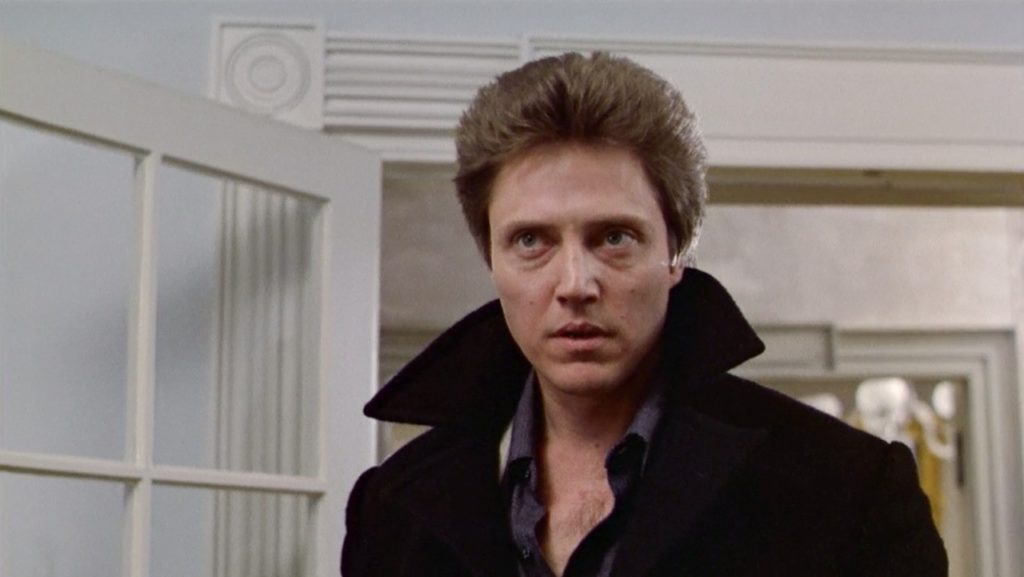
This was originally supposed to have been shot by Cronenberg before ‘Videodrome’, but due to a mix-up, Lorimar (who had the rights at the time) offered it to another director as well as Cronenberg. Though
he lost out, that project was shelved – the option was sold to De Laurentis and happily, THEY took Cronenberg on.
It’s based on a book by Stephen King, although the screenplay combines the three parallel views of the story in one. Walken plays Johnny Smith, who wakes from a five-year coma to discover he has the power to see incidents in peoples’ pasts or future by touching them. Although he has misgivings, he lets the local sheriff (Skerritt) talk him into using this ability to help
track down a murderer. He succeeds, but the end result is further deaths (the gazebo where Smith has the vision of the murder became something of a cause celebre in the town. It was built for the film and a debate followed after shooting between those who wished to keep this architecturally correct prop and those who wanted to tear it down for the lumber. The former group won!).
The crunch comes when Smith shakes the hand of presidential candidate Greg Stillson (Martin Sheen), and sees a vision of him beginning World War III. Should he try to stop the man? After much thought, he decides to assassinate Stillson, despite the fact that his ex-girlfriend is helping in the campaign (she does play a bigger role in the film than this!). The attempt fails when Stillson snatches the girlfriend’s baby and uses it as a shield, and Smith is shot, but as he lies there dying, he has a final vision, of Stillson’s ruin and eventual suicide after pictures of the event are seen around the world.
In many ways, this isn’t a standard Cronenberg film. Unlike his others, he didn’t write the screenplay, although he did have a good amount of creative input. Despite this, and a lack of diseased sexuality, it still has some of the elements discussed above i.e. Smith is able to live with his ‘gift’, more or less happily, until people such as the sheriff come along to ask for his help.
Christopher Walken is pretty good as Smith – this film dates back to when his career was still above water – and the rest of the cast provide solid, if not outstanding, performances. The vision sequences are very effective; the start of World War III, with Stillson launching the ICBMs, is chilling stuff. “Hallelujah, the missiles are flying”, he says with a smile.
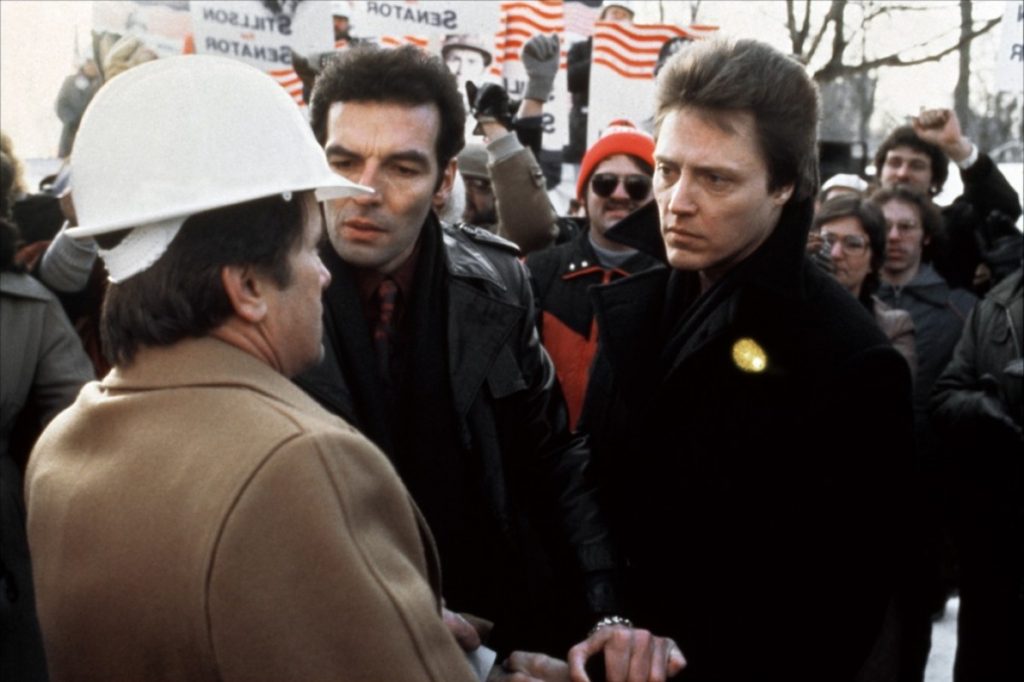
King’s movies are admittedly tough to film, the best results being where much of the wordy crap, for want of a better phrase, and dead characters are cut. Thus ‘The Shining’ becomes an almost totally different story, and the same can be said of ‘The Dead Zone’, to quote scriptwriter Boam: “The book is not structured for film, it rambles”. Hence, the removal of various sundry subplots and characters.
The effects in ‘The Dead Zone’ are rather subdued when compared to almost all his other films, or at least it’s restricted to relatively mundane things such as fires and blood squibs. One scene that did fall foul of the video censor came when the murderer sought by Smith commits suicide by falling face-first onto an open pair of scissors – only the after effects are shown, in a brief flash, but even that had to be excised. Note for trivia buffs : the effects crew on the movie included the daughter of Martin Scorsese, Cathy.
Probably Cronenberg’s most mainstream and accessible film to date, it gives us perhaps the best example of the mutant as hero, another popular theme of his. If the results of the #1 horror film director making a film based on the #1 horror novel author aren’t everything we hoped, it could certainly have been a whole lot worse.
